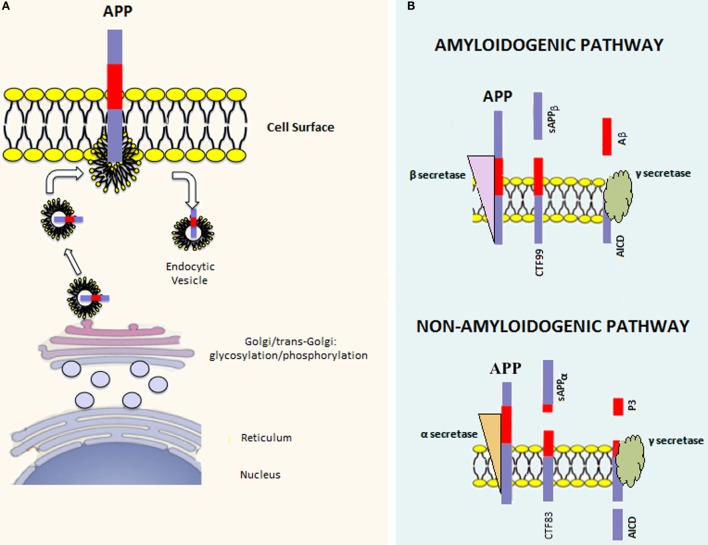Figure 1.
APP processing. (A) Once the APP mRNA is translated, the nascent polypeptide undergoes posttranslation modifications (e.g., glycosylation and phosphorylation) in the endoplasmic reticulum and Golgi apparatus. Afterward, the mature APP protein is addressed to the cell surface through the constitutive secretion pathway. At this point, APP is internalized in endocytic vesicles. Endosomal APP can be recycled to the cell surface or degraded through the lysosomal system. (B) APP can be processed through two distinct pathways. The amyloidogenic pathway involves cleavage by β-secretase, which leads to the formation of the carboxy-terminal fragment 99 (CTF99) and soluble APPβ (sAPPβ). This cleavage is followed by a second cleavage mediated by γ-secretase that leads to the formation of the APP intracellular domain (AICD) and Amyloid-β (Aβ). On the other hand, the non-amyloidogenic pathway involves the sequential cleavage first by α-secretase, which leads to the formation of the carboxy-terminal fragment 83 (CTF83) and soluble APPα (sAPPα), followed by γ-secretase cleavage, which leads to the formation of AICD and P3.

